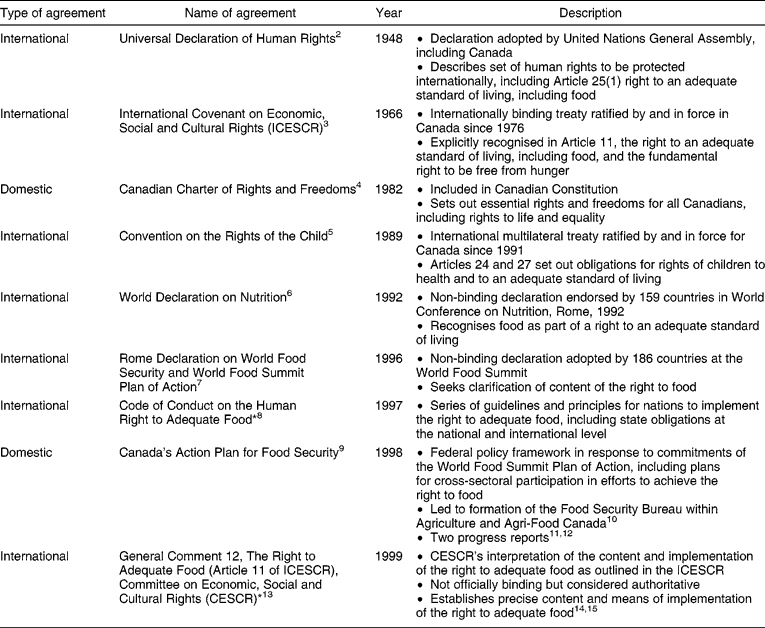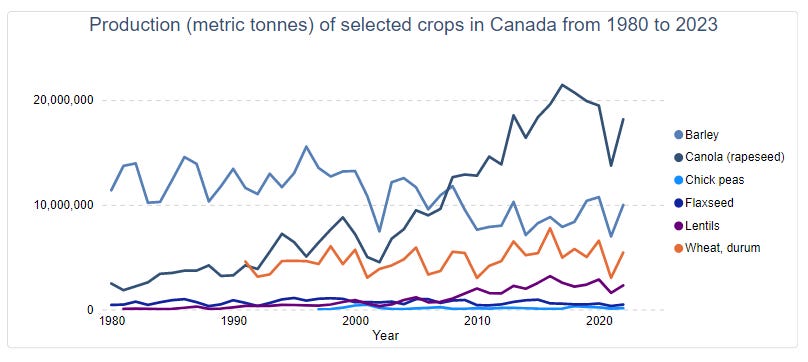Governments like to talk about Rights. Rights for this and that. Federal and Provincial governments are spending millions of dollars every year on internet because the access to inexpensive, dependable internet is a right for all Canadians - they claim. What about a right to (afford) food? Adequate nutrition?
The right to food was recognized in the Universal Declaration of Human Rights adopted by the UN General Assembly in 1948, and enshrined in the International Covenant on Economic, Social and Cultural Rights treaty adopted by the UN General Assembly in 1966. Canadians may be surprised but Canada has signed a number of agreements and intents on this front over many decades.
However, It shouldn't be about a right or justiciability nor should it be approached from a viewpoint just at the individual level. We need to think of food as a smart national policy. Food is the most basic form of energy that powers a nation. It may not be apparent but it’s an energy policy, and for Canada, it is an energy race.
Food inflation is well felt by Canadians. There is a record demand at food banks with 1 in 7 who access food banks are employed; 45.4% are single and 33.1% are children. The food bank demand from children and those with children has been over 30% for decades. At the same time, we are wondering why Canadians are having fewer kids.
We have a systemic problem, we have a structural problem, and it will get worse.
In the 2021 Census, the average age of a farm operator was 56, and a median age of 58 compared to the median Canadian age of 41. 60.5% of the farm operators were 55 plus. From 2016 there was a 1.9% decrease in the number of farms to 189,784 and a decrease of 3.2% in total farm area. It’s not only that farmers are set to retire (theoretically) earlier than the average Canadian but it’s also that the majority of them will, while the number of farms is shrinking.
Core production hasn’t been keeping up with the population either.
With mass immigration and soaring food costs, it is clear we need to look inward and become self-sufficient. Instead of carbon taxing, and red taping our agricultural supply chain we need to make it work for Canadians and blossom the industry. In a geographically blessed country like Canada, no one should be going hungry or avoiding choosing nutrient-rich foods because of price tags.
As a country with “free” but very expensive healthcare, we have a vested interest in healthy people. Or we should. When people can’t afford proper wholesome food they go for calorie fillers, junk food. The long-term consequences are paid elsewhere in the economy with healthcare is naturally one of the places. We can see the long-term effects of poor nutritional choices on the life expectancy of our neighbours down south. Canada must avoid those mistakes and cultural normalization.
On the bright side, Canada had 4,015 greenhouses operating in 2022 - the highest number since 2011, with a total square footage of 334,675,259. Conventional farms will be crucial for centuries but agricultural tech provides more yield and we can rethink farming in and for urban settings.
I envision future markets will be attached to vertical farms. Where people can come to get produce and fruit right from the source. Think of it as a future mixed-use building; farming vertically on top with restaurant and retail on the bottom.
It will be the shortest distance from the farm to the plate which makes it an environmental choice. Due to its efficiencies and vertical square footage, it is also the perfect solution for high-density urban cities. Food production will have to be integrated into the cities of the future just to alleviate and satisfy some of the demand.
Vertical farming is very predictable and technologically enabled. Per harvest it requires fewer labour hours thus less labour and, in a way, makes it simpler. Besides being a valid solution for urbanization it can provide healthier nutrients, vitamins, and minerals; a healthier diet to more people. A healthy diet will be consequential to health, and quality of life which all impacts healthcare and cost, of course.
Food and nutrition intertwine in our economy, our social programs, and the environment. Food and beverage processing was 17.8% of Canada’s manufacturing GDP in 2021. Agriculture and agri-food is a multi-billion industry we can champion, grow and evolve.
Canada has the opportunity to lower food costs for Canadians and grow the economy. It starts at the farm and ends at the kitchen table.



